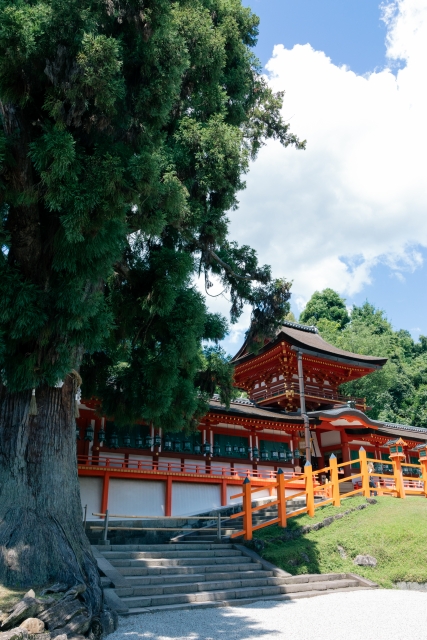【神道の独立】
江戸時代になって、
ほんとうの意味で平和になりました。
(有史以来のどこそこかであった内戦状態が終結)。
鎖国により一般民衆が外国文化に触れる機会は減りました。
仏教を幕府が民衆管理の手段として仏教機関を利用して、いまのお役所のようにしていました。
やがて身近な権威として
仏教に対して反感が芽吹いてきました。
みんなの 意識が国内に目が行く
環境が整ってきたことにより、
学問として【日本古来のものを見なおそう】という考えが出てきました。
【国学】といわれるものです。
それが「復古神道」につながり、日本人の心である神道の見直しになっていきます。
しかし、いまでいう【右傾化】した考え方が含まれていました。
例えば「まごころ」。【素直で偽りのない心】という意味ですが、反対語知っていますか?
【漢意】(からこごろ)です。【中国の思想文化に傾倒する】ことです。
それらが、後に、尊王攘夷運動や、廃仏毀釈、国家神道へと辛い時代へとつながっていきます。

With the Edo period, true peace was finally achieved (ending the state of civil war that had existed somewhere since historical times).
Due to the national isolation policy, the general public had fewer opportunities to come into contact with foreign cultures.
The shogunate used Buddhist institutions as a means of controlling the populace, much like today’s government offices.
Eventually, resentment began to sprout against Buddhism, which was a close authority.
As the environment where everyone’s consciousness goes inward was established, the idea of “re-examining things from ancient Japan” emerged as a study.
This is what is called “National Studies”.
This led to “Restoration Shinto”, and it became a review of Shinto, which is the heart of the Japanese people.
However, it included what is now called “right-leaning” thinking. For example, “Magokoro”. It means “a heart that is honest and without falsehood”, but do you know the antonym?
It’s “Kara-kokoro”. It means “leaning towards Chinese thought and culture”.
These later led to the Sonnō jōi movement, the Haibutsu kishaku, and State Shinto, leading to a painful era.
|
|


![[商品価格に関しましては、リンクが作成された時点と現時点で情報が変更されている場合がございます。] [商品価格に関しましては、リンクが作成された時点と現時点で情報が変更されている場合がございます。]](https://hbb.afl.rakuten.co.jp/hgb/3a45e94e.1d7afab7.3a45e94f.140840c8/?me_id=1200488&item_id=10001947&pc=https%3A%2F%2Fthumbnail.image.rakuten.co.jp%2F%400_mall%2Fbutudan%2Fcabinet%2Fkmd1%2Fkami-42031st-2_i1.jpg%3F_ex%3D240x240&s=240x240&t=picttext)



コメント